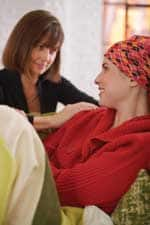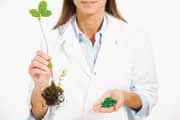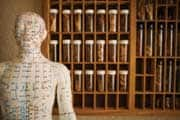Life Extension Magazine®
| Doctors don’t have all the answers when it comes to battling lethal diseases like cancer. Too often, oncologists and other cancer specialists have closed minds when it comes to therapies that might lie outside the bounds of what they learned in medical school textbooks. It’s an ironic state of affairs, since physicians—of all people—should understand the fact that there is no one-size-fits-all approach to disease management. Of course, not all doctors appreciate having their ironclad approaches challenged. For example, one of AAP’s underlying tenets is that antioxidants can prove useful in conjunction with conventional therapy. The Annie Appleseed Project (AAP), based in Delray Beach, Florida, was formed in response to this approach. Anyone who has been diagnosed with cancer knows that it’s probably the single most frightening word they will ever hear. Adding to the fear are the sudden confusing decisions that need to be made about which therapies or treatments might be right for their particular situation. The goal of AAP is to help alleviate some of that fear by providing solid information, advocacy and awareness for people with cancer about complementary and alternative medicine (CAM). Although the project began as AAP founder Ann Fonfa’s personal quest to get answers about CAM therapies, it has grown to become a nationally recognized organization. Seeds Planted
Fonfa was diagnosed with breast cancer in January 1993. Because of chemical sensitivities, she opted not to take chemotherapy—but she knew she had to find some viable alternatives. “Back then, anything that wasn’t chemo or radiation was considered alternative,” Fonfa recalls. “Even yoga was considered dangerous at the time.” Fonfa quickly agreed to a mastectomy—after three lumpectomies. “In the early 90s, patients typically knew nothing other than that you either kept or lost your breast.” Six months later, Fonfa had recurrence on the chest wall and was considered stage IV. “I objected, since I had no signs of metastatic disease, but was told that was the way it was done.” After dabbling in a variety of alternative therapies, Fonfa was offered the chance to work with a Chinese herbalist who also had a PhD from Harvard. “This struck me as a good combination: someone with a foot in each camp, so to speak.” Fonfa had meanwhile tried her own brand of CAM by this point: high-dose vitamin A therapy. “By the third week, I noticed the tumors were smaller. I saw an oncologist who, after I told him the news, simply asked me to get dressed. He didn’t even look at the tumors. In later discussions with other oncologists, I found that they already knew about the benefits of vitamin A. I wonder to this day why women aren’t told about this.” On the path to gaining knowledge for herself, Fonfa encountered others in a similar situation. She decided to found a study group in New York City to which she began inviting speakers, reading books, and obtaining literature from clinics in places not tied in with the American medical establishment. Eventually, Cancer Care Inc. invited her to talk to their social workers about the patient perspective on alternative medicine. That prompted her to create an outline summarizing what she had learned. “I realized I had tons of information in the form of summaries I had been making of each meeting I’d attended since 1994,” Fonfa explains. The Annie Appleseed website (www.annieappleseedproject.org) went online in June, 1999. Nowadays, relevant content is added on a weekly basis, currently totaling some 8,000 web pages and links. In addition to reports from conferences worldwide, the site posts studies that help explain the benefits of natural and nontoxic substances. More than two million people have visited in the last twelve months, and thousands more have heard Fonfa speak at meetings around the US, asking challenging questions that many doctors don’t want to hear. Seedling Takes Root“Early funding for AAP came from family, personal friends, other advocates and advocacy groups,” says Fonfa. Even now, she says the organization receives more than 60% of its funding from donations under $100. Still, growth has been phenomenal: in the last three years, the project has begun offering its own annual educational conference and some foundations have given larger grants. “We have few steady large donors, however,” she laments.
Fonfa still does much of the hands-on work herself. “I have yet to find anyone crazy enough to work full time for no pay,” she says. “We do have terrific volunteers who help us with creating print material, distributing materials all over the country, and attending meetings to obtain written summaries so that others can view the information gained.” The project also bolsters its primary mission by attending many meetings each year to make its presence known. “It’s crucial that the scientific, research and medical community be made aware of our advocacy,” Fonfa says. “We speak up a lot, and we ask questions.” Fonfa feels CAM has had a slow road to acceptance in large part because Western science is overly focused on naming and trying to understand exactly why something works. “While we welcome such information, the information itself—the why—doesn’t change what is happening,” she points out. “Even if the workings of a natural substance or technique cannot be fully explained, that does not diminish the reality of its effect. From its inception, the Annie Appleseed Project was intended to challenge the existing treatment paradigm.” An important part of this is questioning research subjects and methods, proposing instead new directions that take a serious look at CAM and other techniques. “Our hope is that this can ultimately result in a truly integrative oncology.” Of course, not all doctors appreciate having their ironclad approaches challenged. For example, one of AAP’s underlying tenets is that antioxidants can prove useful in conjunction with conventional therapy. “The preponderance of evidence favors this theory,” states Fonfa. “Relatively few oncologists share this perspective, however.” She adds that individual patients are still faced with challenging their oncology team if they question what they are told or ask about alternatives. And for those cancer centers that do have integrative sections or offer newer options, programs typically have to pay out of pocket to utilize the benefits. Nevertheless, Fonfa sees AAP’s ideas slowly gaining ground despite such huge hurdles. “Younger doctors are often more open to CAM, but things change slowly in the medical world,” she concedes. “While increasing numbers of hospitals have nutritionists on staff, not everyone gets a recommendation to visit them. But at least yoga is considered a good idea now!” The project intervenes in these areas by suggesting patients download relevant articles and studies from its extensive online library. With these in hand, patients are better equipped to open a possibly difficult dialogue with their doctor. The goal of AAP is providing solid information, advocacy and awareness for people with cancer about complementary and alternative medicine (CAM). Tree Bears FruitAAP’s role as a disseminator of vital information continues to expand. Fonfa has presented posters, papers, and workshops at many conferences worldwide. She was a featured speaker in Hyderabad, India in 2006, and has given presentations at the National Breast Cancer Coalition’s annual meeting. AAP has sponsored two national meetings—“Evidence-based Complementary and Alternative Cancer Therapies”—in 2008 and 2009, and has exhibited at 30 other meetings including the American Society for Clinical Oncology, Oncology Nursing Society, Ovarian National Cancer Alliance, Prostate Forum, and American Psychosocial Oncology Society. Even politicians have been consulting the AAP website as a policy-planning resource. This year will see the third annual Evidence-Based CAM for Cancer Advocates in January, 2010, to be held in West Palm Beach. Fonfa says the Annie Appleseed Project, as the premier resource on CAM from the patient perspective, is thrilled to be able to offer this educational conference. Patients can meet others who have used complementary or alternative modalities, while practitioners will in turn hear ways to help patients make more informed choices. All attendees will learn how to make healthy lifestyle choices during treatment, after treatment, and into long-term survivorship.
For Fonfa, achieving that survivorship has been a long road of self-discovery. “I took my first dose of Chinese herbs in April 1999. That day I broke out with severe hives. I was sent to a dermatologist, who recommended antihistamines. I woke in the middle of the night with terrible tightness in my chest, which I discovered is a primary possible negative side effect of antihistamines. Since I had specifically mentioned my double mastectomy, I thought the dermatologist might have warned me!” Fonfa was afraid to touch the herbs again for a solid month. Finally, she called the Chinese herbalist and went forward once more—but first she had an MRI to document the extent of invasive lobular carcinoma in her chest wall. “I made a tea of the herbs from June 1999 until August 2001. I was afraid to stop, even after the herbalist advised me that I was done.” Finally, Fonfa had another MRI. “The doctor who was reading it couldn’t find anything, and was confused as to why I’d had it done.” Fonfa met with her surgeon on September 12, 2001. “I was living in New York City, and the whole world knows what happened the day before. Fonfa says her doctor told her officially what she really already knew: she was cancer-free. Outside the hospital, Fonfa began to cry, thinking how she had just gotten a reprieve when so many others had died. “Instantly, three women came up to embrace me. They thought I was responding to the visible plume of smoke over lower Manhattan—but here I was, crying because I would live.” For more information on the Annie Appleseed Project, visit www.annieappleseedproject.org. |



